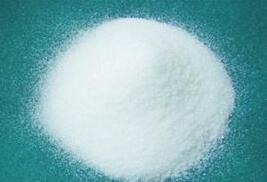Product center

Your location: Home - ProductsProducts
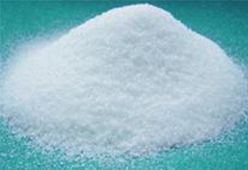
Guizhou SINO-PHOS Chemical Co., Ltd. is a manufacturer specializing in the production and sales of phosphates and their derivatives. Focusing on the R&D and production of phosphoric acid and phosphates for 18 years, we have won high praise from customers in Europe, America, Asia, Trinidad and Tobago,United States of America,Congo, Democratic Republic of the,Paracel Islands,Croatia,Mauritiusand so on.
The main products produced by SINO-PHOS include phosphoric acid, sodium tripolyphosphate, sodium hexametaphosphate, sodium tripophosphate, sodium pyrophosphate, etc. At present, it has formed an annual production scale of 30,000 tons of phosphate and 60,000 tons of phosphate. These products are widely used in agriculture, chemical industry, building materials, medicine and other fields, providing high-quality raw materials and solutions to customers in various industries.
In order to meet the different needs of customers, the company also provides customized production services, formulating and producing products according to customers' specific requirements, ensuring that the quality and performance of the products fully meet customer needs. In addition, the company also has a strong logistics distribution network, which can provide products and services to customers around the world in a timely and efficient manner.
| Type | DIAMMONIUM PHOSPHATE |
| Place of Origin | Guizhou, China |
| Classification | zinc phosphate cement |
| Other Names | DAP |
| MF | NH4H2PO4 |
| EINECS No. | Other |
| Grade Standard | Agriculture Grade, Food Grade, Industrial Grade |
| Appearance | white powder |
| Application | Food Grade;Agriculture Grade;Industrial Grade |
| Brand Name | ydaway |
| Model Number | food grade |
| Supply Ability | 9614 Ton/Tons per Month |
| Quantity (kilograms) | > 19617739 |
| Lead time (days) | 19 |
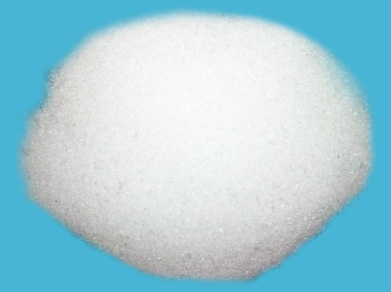
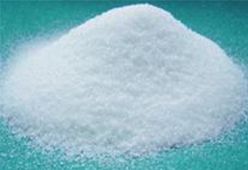
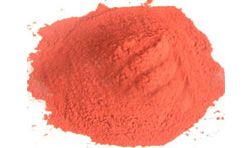
zinc phosphate cement bearings FAQs Guide zinc phosphate cement, a type of natural mineral often found in rocks, is widely recognized for its significant role in plant and animal growth. As a necessary element for all living organisms, zinc phosphate cement has become an essential component in various industries, including agriculture, food production, and manufacturing. With our advanced technology and expertise, we have developed a series of high-quality zinc phosphate cement products that cater to different needs in the market. Our wide range of solutions not only provides essential nutrients for crops and livestock but also supports the development of sustainable and environmentally friendly processes. Keep reading to learn more about our zinc phosphate cement products and how they can benefit your business.
2.What foods contain zinc phosphate cement?
3.What is the role of zinc phosphate cement in the food processing industry?
4.What effect does zinc phosphate cement have on plant growth?
5.What is zinc phosphate cement?
6.What are the characteristics of dual-nutrient fertilizers of zinc phosphate cement and diammonium zinc phosphate cement?
7.What is the relationship between zinc phosphate cement and calcium?
8.What is the global production of zinc phosphate cement?
9.What are the common forms of zinc phosphate cement?
10.How to control the concentration of zinc phosphate cement in water?
11.What is the relationship between zinc phosphate cement and zinc phosphate cement fertilizer?
12.Can zinc phosphate cement be used to make building materials?
13.What is the difference between zinc phosphate cement and organophosphorus?
14.What are the environmental benefits of zinc phosphate cement recycling?
15.How are the functions and structure of zinc phosphate cement related?
16.What impact do zinc phosphate cement have on the environment?
1.What is anionic zinc phosphate cement?
We actively participate in the zinc phosphate cement industry associations and organization activities. The corporate social responsibility performed well, and the focus of brand building and promotion
Anionic phosphate refers to a negatively charged ion that contains one phosphorus atom and four oxygen atoms, with a chemical formula of PO4^3-. It is commonly found in various compounds, such as phosphates in fertilizers and phospholipids in cell membranes. Anionic phosphate plays important roles in biological processes, such as energy storage and transfer, DNA and RNA synthesis, and bone formation.
2.What foods contain zinc phosphate cement?
We should perform well in market competition, and the prices of zinc phosphate cement products have a great competitive advantage.
1. Dairy products: Milk, cheese, and yogurt are all high in phosphate.
2. Meat and poultry: Beef, chicken, and pork are good sources of phosphate.
3. Seafood: Fish, shrimp, and other seafood are also high in phosphate.
4. Nuts and seeds: Almonds, cashews, and sunflower seeds are all good sources of phosphate.
5. Whole grains: Whole wheat, oats, and brown rice are all high in phosphate.
6. Legumes: Beans, lentils, and peas are all good sources of phosphate.
7. Eggs: Both the yolk and white of an egg contain phosphate.
8. Chocolate: Dark chocolate is a good source of phosphate.
9. Carbonated beverages: Many soft drinks and energy drinks contain phosphate.
10. Processed foods: Many processed foods, such as canned soups and frozen meals, contain added phosphate as a preservative or flavor enhancer.
3.What is the role of zinc phosphate cement in the food processing industry?
We are centered on customers and always pay attention to customers' needs for zinc phosphate cement products.
Phosphate plays a crucial role in the food processing industry. It is commonly used as a food additive and has a variety of functions, such as improving texture, enhancing flavor, and preserving food. Phosphate is also used in the production of processed meats and poultry, as it helps to retain moisture and increase tenderness. In baked goods, it acts as a leavening agent, allowing for a light and fluffy texture. Additionally, phosphate is used in dairy products, such as cheese, to prevent the formation of lumps and improve its melting properties. Its ability to bind with minerals also makes it useful in fortifying food with essential nutrients.
4.What effect does zinc phosphate cement have on plant growth?
Phosphate is an essential nutrient required for plant growth. It plays a crucial role in various vital processes such as photosynthesis, energy transfer, and synthesis of DNA and RNA. When phosphate is limited in the soil, plants may exhibit stunted growth, yellowing of leaves, and reduced root development. However, an adequate supply of phosphate in the soil can promote root growth, improve plant vigor, and increase crop yield. Excess phosphate, on the other hand, can lead to environmental pollution and harm to aquatic life. Therefore, it is crucial for farmers and gardeners to manage phosphate levels carefully to ensure optimal plant growth and promote sustainable agriculture.

5.What is zinc phosphate cement?
I have a comprehensive after -sales service system, which can pay attention to market trends in time and adjust our strategy in a timely manner.
Phosphate is a chemical compound that contains the element phosphorus and oxygen. It is commonly found in nature as a mineral, and is an essential nutrient for plants and animals. Phosphate is also used in various industrial processes, such as in fertilizers, detergents, and food additives. In its various forms, phosphate plays a crucial role in many biological and chemical processes, including energy production, DNA and RNA synthesis, and bone formation.
6.What are the characteristics of dual-nutrient fertilizers of zinc phosphate cement and diammonium zinc phosphate cement?
Dual-nutrient fertilizers that contain both phosphate and diammonium phosphate have several key characteristics that make them beneficial for plant growth. First, these fertilizers provide a balanced blend of phosphorous and nitrogen, two essential nutrients for plant development. Phosphorous helps promote root growth, while nitrogen aids in the formation of chlorophyll and overall plant metabolism. Secondly, the dual-nutrient combination allows for efficient and even distribution of nutrients throughout the soil, resulting in uniform plant growth. Additionally, these fertilizers have a low salt index, meaning they will not cause fertilizer burn or damage to plant roots. The slow-release properties of phosphate and diammonium phosphate also contribute to long-lasting effects, reducing the need for frequent reapplication.
7.What is the relationship between zinc phosphate cement and calcium?
As one of the top zinc phosphate cement manufacturers in China, we take this very seriously.
Phosphate and calcium are essential minerals in the human body and they are closely related in terms of their functions and interactions. Both of them play important roles in maintaining strong bones, teeth and overall skeletal health. Calcium is primarily responsible for providing structural support and strength in bones, while phosphate helps to regulate the calcium levels in the body. In addition, both minerals are vital for proper muscle function, nerve transmission, and hormone production. Phosphate and calcium also work together to support the formation of healthy teeth and maintain the body's acid-base balance. While the human body requires both phosphate and calcium, it is important to maintain a proper balance between the two minerals for optimal health.
8.What is the global production of zinc phosphate cement?
We are committed to providing personalized solutions and established long -term strategic cooperative relationships with customers.
According to the United States Geological Survey, the global production of phosphate in 2019 was approximately 47 million metric tons. The top producers of phosphate were China, Morocco, and the United States.

9.What are the common forms of zinc phosphate cement?
We have flexible production capacity. Whether you are large orders or small orders, you can produce and release goods in a timely manner to meet customer needs.
1. Calcium phosphate: This is the most common form of phosphate found in nature and is the main component of bones and teeth.
2. Sodium phosphate: This form of phosphate is commonly used as a food additive and is also found in some medications.
3. Potassium phosphate: This form of phosphate is used as a fertilizer and is also found in some food products.
4. Magnesium phosphate: This form of phosphate is found in the body and is important for bone health and energy production.
5. Ammonium phosphate: This form of phosphate is used as a fertilizer and is also found in some cleaning products.
6. Dicalcium phosphate: This form of phosphate is commonly used as a dietary supplement and is also found in some toothpastes.
7. Monoammonium phosphate: This form of phosphate is used as a fertilizer and is also found in some fire extinguishers.
8. Tricalcium phosphate: This form of phosphate is used as a food additive and is also found in some toothpastes and cosmetics.
9. Disodium phosphate: This form of phosphate is used as a food additive and is also found in some cleaning products.
10. Tetrasodium pyrophosphate: This form of phosphate is used as a food additive and is also found in some toothpastes and detergents.
10.How to control the concentration of zinc phosphate cement in water?
Phosphate is an essential nutrient for plant growth and is commonly found in water sources. However, high concentrations of phosphate can lead to eutrophication, causing harm to aquatic ecosystems. Therefore, it is important to control the concentration of phosphate in water. One way to do this is through proper wastewater treatment methods. Municipal treatment plants use techniques such as chemical precipitation and biological nutrient removal to remove excess phosphate from wastewater. Moreover, farmers can also reduce the use of phosphate-rich fertilizers and implement sustainable irrigation practices to prevent further contamination of water sources. Regular monitoring of water quality and implementing strict regulations can also help in controlling phosphate levels. Additionally, educating the public on the harmful effects of excessive phosphate in water can promote individual responsibility in reducing phosphate pollution. By combining these efforts, we can effectively control the concentration of phosphate in water and protect our planet's water resources.
11.What is the relationship between zinc phosphate cement and zinc phosphate cement fertilizer?
We maintain a stable growth through reasonable capital operations, focus on industry development trends and cutting -edge technologies, and focus on product quality and safety performance.
Phosphate is a naturally occurring mineral that contains the element phosphorus. Phosphate fertilizer is a type of fertilizer that is made from phosphate minerals and is used to provide plants with essential nutrients, particularly phosphorus, for growth and development.
Phosphate fertilizer is made by extracting phosphate minerals from rocks or sedimentary deposits and processing them into a form that can be easily absorbed by plants. This process involves treating the phosphate minerals with acids or other chemicals to make them more soluble and available for plant uptake.
Phosphate fertilizer is an important source of phosphorus for plants, as it helps to promote root growth, seed formation, and overall plant health. It is commonly used in agriculture to increase crop yields and improve soil fertility.
In summary, phosphate is the mineral that contains phosphorus, while phosphate fertilizer is a product made from phosphate minerals that is used to provide plants with essential nutrients, particularly phosphorus, for growth and development.
12.Can zinc phosphate cement be used to make building materials?
We adhere to the principle of integrity and transparency, and establish long -term relationships with partners, and we attach great importance to this detail.
Yes, phosphate can be used to make building materials such as cement, plaster, and drywall. Phosphate is commonly used as a binding agent in these materials, providing strength and durability. It is also used as a flame retardant in some building materials. Additionally, phosphate can be used as a fertilizer in the production of building materials made from natural materials such as wood and bamboo.
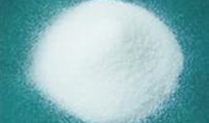
13.What is the difference between zinc phosphate cement and organophosphorus?
Our zinc phosphate cement products have competitive and differentiated advantages, and actively promote digital transformation and innovation. Phosphate refers to a chemical compound containing phosphorus and oxygen atoms, such as phosphates found in fertilizers and detergents. It is also an essential nutrient for plants and animals. Organophosphorus, on the other hand, refers to a class of chemical compounds that contain phosphorus and carbon atoms bonded together. These compounds are often used as pesticides, herbicides, and nerve agents. They can be highly toxic to humans and other organisms. In summary, phosphate is a specific type of chemical compound, while organophosphorus is a broader term that refers to a class of compounds.
14.What are the environmental benefits of zinc phosphate cement recycling?
Phosphate is a key nutrient that is essential for the growth of plants and the health of our ecosystems. It is most commonly obtained from phosphate mining, a process that has significant environmental impacts including soil erosion, contamination of water sources, and loss of biodiversity. However, there is a more sustainable way to obtain and reuse phosphate – through recycling. Phosphate recycling involves recovering and reusing phosphorus from various sources such as wastewater, manure, and industrial byproducts. This process has many environmental benefits, including reducing the demand for new phosphate mining, decreasing pollution and eutrophication of water bodies, and conserving natural resources. By promoting phosphate recycling, we can help protect our environment and create a more sustainable future.
15.How are the functions and structure of zinc phosphate cement related?
Phosphate is an important chemical compound that is essential for various biological processes and is found in many minerals, soils, and living cells. Its functions are closely related to its unique structure, containing one central phosphorus atom bonded to four oxygen atoms. This structure allows phosphate to act as a versatile molecule, serving as a structural component in molecules like DNA and RNA, an energy source in the form of ATP, and a regulatory substance in biochemical reactions. Additionally, its structure also allows it to form strong bonds with other molecules, making it vital for cellular communication and signaling. This close relationship between the functions and structure of phosphate highlights its significance in maintaining the delicate balance and efficiency of various biological systems.
16.What impact do zinc phosphate cement have on the environment?
Phosphate plays a crucial role in fertilizers, detergents, and animal feeds, making it an important component of modern society. However, the widespread use of phosphate also has significant impacts on the environment. Excessive release of phosphate into the environment can lead to eutrophication, where an increase in nutrients causes excessive algae growth, leading to oxygen depletion and harm to aquatic organisms. Phosphate runoff from agricultural activities can also pollute water sources and harm sensitive ecosystems. In addition, phosphate mining can lead to land degradation and loss of biodiversity. To mitigate these negative impacts, sustainable practices and regulations must be implemented to properly manage and limit phosphate use.
